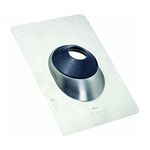
Synopsis: The author explains how he constructs a sod roof. Heavier than conventional roofing and prone to leaks if not detailed carefully, sod still has some advantages as long as you don’t mind hauling a lawnmower up now and again. This explains how it’s done.
Sod has served as a roofing material throughout history and throughout the world. Sod covered the roofs of 14th-century Pawnee earth lodges, and it made up the walls and roofs of Scotch and Irish folk houses. But sod roofs are most deeply rooted in Scandinavia, where the climate fosters a thick and healthy turf. The traditional Scandinavian sod roof consisted of birchbark sheathing laid across poles running from ridge to wall, with blocks of turf cut from a nearby field and laid on the birchbark. The roofs leaked a bit, to be sure, but some of them lasted for centuries.
As a builder dedicated to the use of natural components, such as rammed-earth walls and soil-cement tile floors, I’ve been striving to develop a truly dependable sod roofing system. I think a living roof adds immeasurably to the ambience of a home. The first sod roof I built was almost as simple and as cheap as the traditional Scandinavian roof. Covering a small cabin on our ranch in the Sierra Nevada mountains of California, it consists of 30-lb. felt stapled over the roof boards, two layers of 6-mil polyethylene sheeting with asphalt emulsion between them and 4 in. of forest humus seeded with perennial rye. The roofing materials cost about 12 cents a sq. ft., and the labor was all ours. After nine years, the roof still doesn’t leak much, but it does leak.
We even raised rabbits on that roof, and our wise old peahen outfoxed the foxes by nesting up there. The rabbits kept the grass mowed and fertilized, and every so often when one fell off the roof, right into the stew pot he went.
But there are more tangible advantages to a sod roof. Six or eight inches of healthy sod provide a pretty good thermal buffer, helping to keep a house cool in the summer and warm in the winter. One rammed-earth house I built in Calaveras County probably wouldn’t have survived a recent brush fire if not for its sod roof. With the fire fast approaching, the owner mowed his roof and turned on the roof-top sprinklers. The fire swept right past the house, inflicting no damage.
Of course, there are disadvantages to sod roofs, too. They’re heavy, calling for stronger and more expensive roof timbers than do conventional roofs. There can also be extra maintenance involved, particularly if the roof is supposed to look well groomed. And if leaks develop, they can be a hassle to find. Unlike conventional roofs, where water runs downhill, 8-in. of soil can create enough hydrostatic pressure to force water upslope and through even the smallest of cracks.
For more photos, drawings, and details, click the View PDF button below:
Fine Homebuilding Recommended Products
Fine Homebuilding receives a commission for items purchased through links on this site, including Amazon Associates and other affiliate advertising programs.

Roof Jacks

Flashing Boot

Peel & Stick Underlayment






















